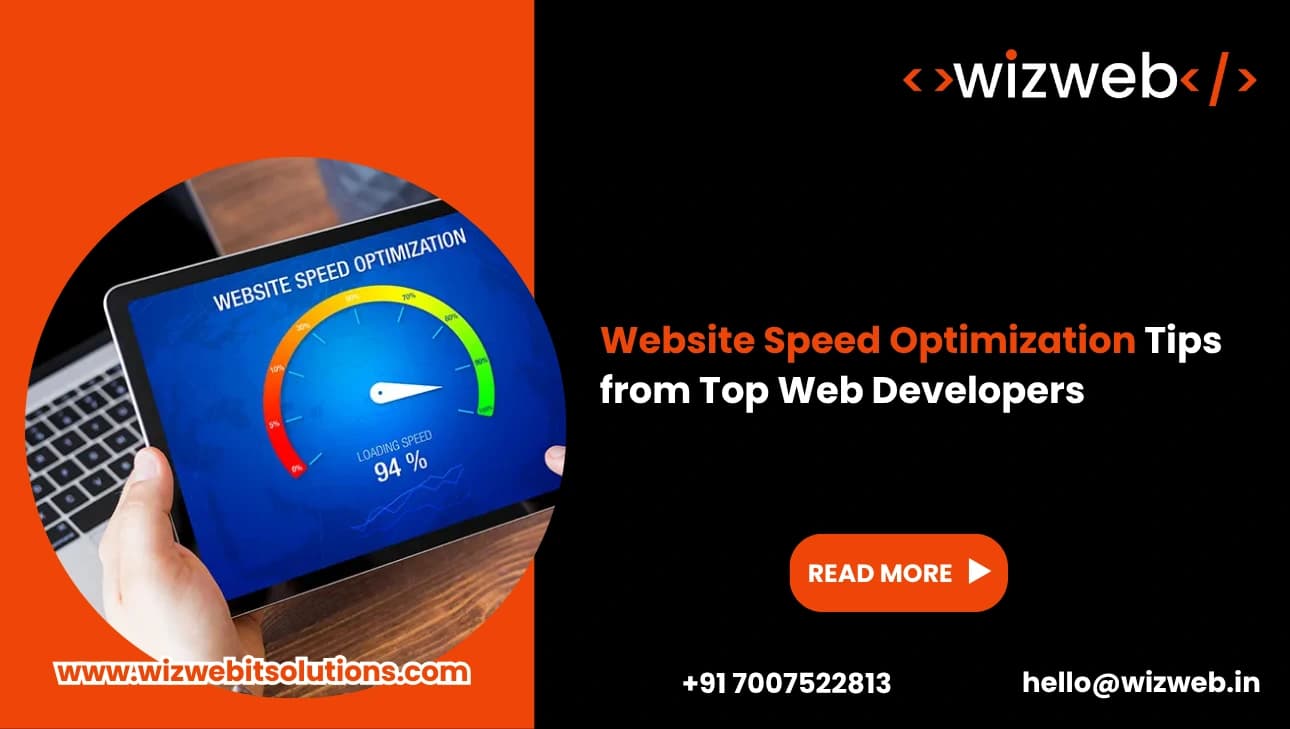Get in Touch
- Phone
+91 700 752 2813
- Email Now
hello@wizweb.in
Office No - 204 A-140, Sector 63 Road Noida, Uttar Pradesh 201301

In today’s fast-moving online world, people want websites to load quickly. If a website takes too long to open, users may leave before they even get to see what’s on it. A slow website can make you lose visitors, reduce sales, and even affect your position on search engines like Google.
That’s why website speed matters so much.
To help you improve your site’s speed, we’ve collected the most effective Website Speed Optimization Tips from top web developers. Don’t worry if you’re not very technical — this article is written in simple English so everyone can understand and apply these tips.
Before we jump into the Website Speed Optimization Tips, let’s first understand why speed is so important for any website:
Now, let’s look at how to make your website faster.
You can’t fix a problem unless you know it exists. Use tools like:
These tools will show you how fast (or slow) your website is and where the problems are. They also offer suggestions on how to fix them.
This is the starting point of all Website Speed Optimization Tips. You need to measure before you can improve.
Large images are one of the main reasons why websites become slow. But you don’t need to remove images — just make them lighter.
Here’s how:
Among all Website Speed Optimization Tips, this is often the easiest and gives the biggest improvement.
Your hosting service is where your website lives. If the hosting is slow, your website will also be slow — no matter how optimized your content is.
Here’s what to look for:
Many businesses choose professional Web Development Services that include fast hosting as part of their package.
Your website uses CSS (for design), JavaScript (for actions), and HTML (for structure). These files can be large if they include unnecessary code, spaces, or comments.
Minifying means cleaning up these files to make them smaller and faster to load.
You can use tools like:
This is a must-follow part of Website Speed Optimization Tips if you want clean and fast code.
When someone visits your site for the first time, their browser downloads files like images, CSS, and JavaScript. If you enable browser caching, the browser stores these files. So next time, the site loads much faster.
You can enable caching through:
This tip is simple but very effective.
A CDN is a group of servers around the world that deliver your website content from the nearest server to your user. This helps reduce loading time, especially if your visitors come from different countries.
Popular CDN services include:
This is one of the smartest Website Speed Optimization Tips, especially for global websites.
GZIP compression helps reduce the size of your website files before they’re sent to the user’s browser. This makes your site load faster.
You can enable GZIP by:
This step works behind the scenes but makes a big difference in speed.
If your page has many images or videos, don’t load them all at once. Lazy loading means that these elements will only load when the user scrolls down to them.
Benefits of lazy loading:
Professional Web Development Services often use lazy loading by default when building high-performance websites.
If you use WordPress or another CMS, avoid installing too many plugins. More plugins mean more code, and more code can slow down your website.
Use only essential plugins and delete the rest. Also, keep them updated to avoid security issues and performance problems.
A clean, simple design is not only good for users — it’s also good for speed. Avoid heavy animations, large image sliders, or unnecessary features.
Use lightweight themes and frameworks. Minimalist designs are easier to load and often look more professional.
Top Web Development Services always recommend simple and user-friendly designs for faster websites.
A fast website can help you get more traffic, increase your sales, and keep users happy. You don’t have to be a developer to apply these tips. Start small and improve step by step.
Here’s a quick recap of the top Website Speed Optimization Tips:
These Website Speed Optimization Tips are easy to follow and can make a big difference in your website’s performance. If you need help, don’t hesitate to contact expert Web Development Services that can handle the technical work for you.